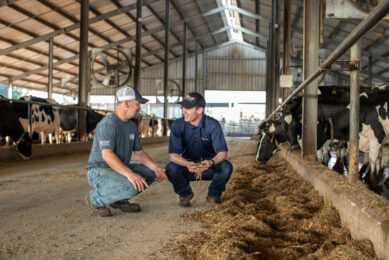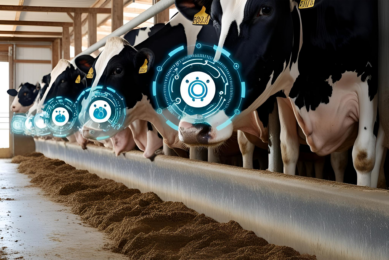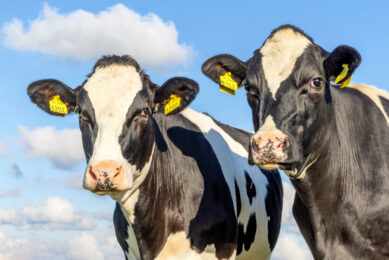VIDEO: Catching up with the ‘floating’ cows in the Netherlands
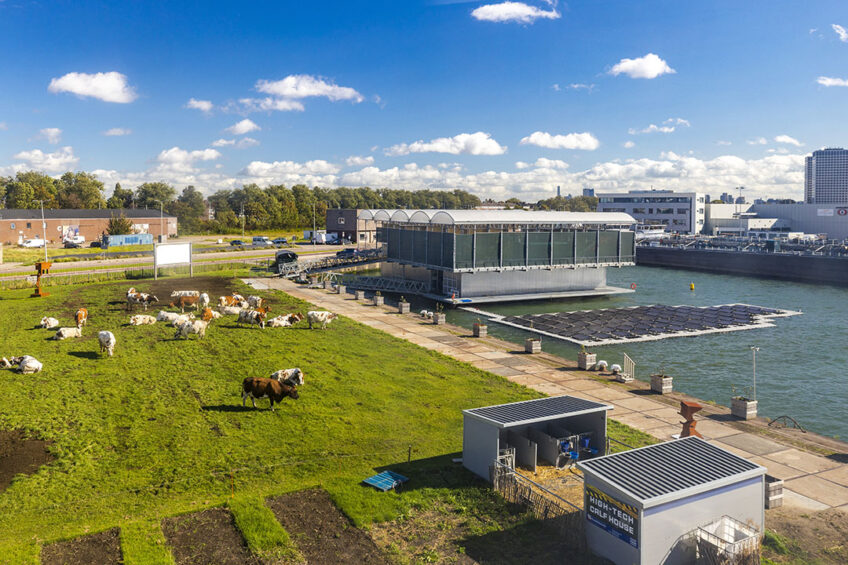
At first it seems as if the farm is situated in the most unlikely spot in the Netherlands, yet the Floating Farm accommodates 34 dairy cows on the day of our visit. The Holstein-Friesian cows seem to take to ‘floating’ and are housed on a platform in an old port of Rotterdam without much hassle. It was opened in 2019. Now, a few years on, we catch up with this unique dairy farm.
Minke runs the farm alongside her husband, Peter van Wingerden. They are the founders of the farm and run it together with over 40 volunteers. Minke points out that the farm also serves as a social hub and adds that the volunteers feel part of the farm and see themselves as ambassadors of the operation. Volunteers not only help with the farm animals but also run the nearby shop, distribute products around the city and make presentations.
En route to the farm it seemed more like a city visit rather than a typical farm visit. Surrounded not by abundant rows of trees, vast pastures or even typical cattle barns as one would expect, but zig-zagging through small roads and narrow turns which eventually leads to a view of a structure floating effortlessly on the water.
At first it could be overlooked and mistaken for just another interesting city structure. But from the parking space, the words ‘Floating Farm’ in big, bold, black letters on a building near the farm tell us that we are in the right place and that the structure is in fact where the cows are kept and where dairy products are produced.
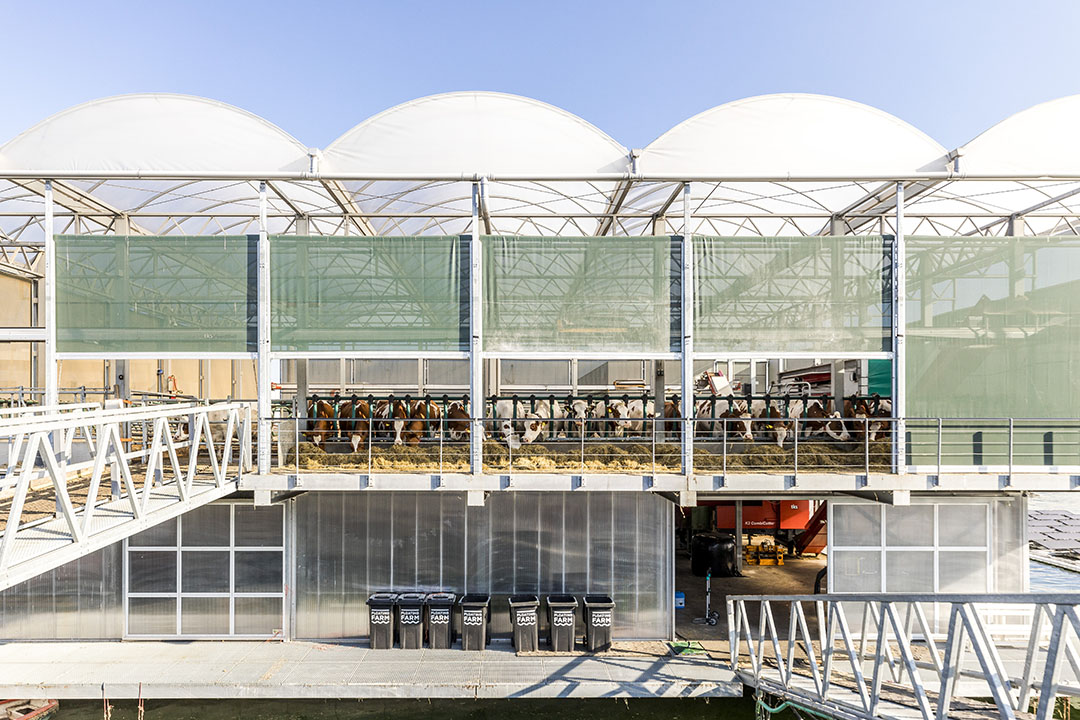
All the processes controlled by the farm – such as the cheese making, the vertical farming trials and the dairy production – are contained within this building, seemingly unassuming despite its uniqueness. In reality there is quite a lot happening there, and it is a rather impressive construction.
Upon arrival we are greeted by Minke, who has just finished a tour – one of many on the agenda. She has led a bunch of students through the farm, up and down its ramps to explain how it all works here, including the production and the processes taking place. She greets us enthusiastically and explains that it is a very busy day. This is a popular farm and many people from around the world make their way to come and see it. It is not surprising – its uniqueness brings with it many who would like to see how future farms could be set up in places where there is a lack of space but ample water.
Location on the water
The idea of the farm was born within a framework of sustainability – producing close to consumers, where there is a lack of agricultural space and with circularity in mind.
It took its inspiration from the situation in New York a few years ago, when hurricane Sandy hit in 2012, when the entire city was running out of fresh food within days. This led to the further observation of how the resiliency of major cities is increasingly threatened by long food supply chains and by the fact that production takes place far away from consumers.
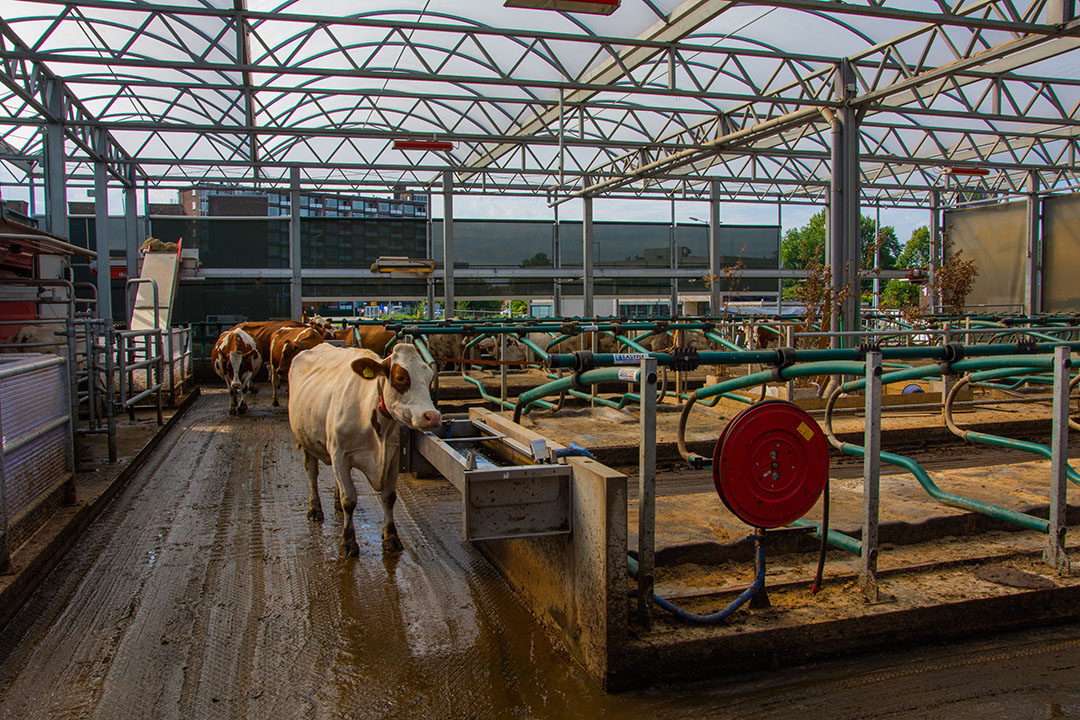
Initially, the thinking behind this farm was that it would be nestled within the makeup of a bustling city and that it would ‘transform’ farming, making it work within the available city space and shortening the distance to consumers. Because of its location, the Floating Farm can deliver all milk products to the city using electric cars.
The location of the farm means that it is “climate adaptive” as Minke explains, stating that the farm platform is built in such a way that it moves with the tide, going up and down with the water levels. This will make it withstand intense weather – it won’t be affected by floods, for example.
Awareness and education are also key factors at this location. With the dairy sector under so much scrutiny and the pressure to produce in a more transparent way, this farm allows consumers to see exactly where their products are produced and, essentially, how they are produced. “It is about climate adaption, awareness and shortening the chain to the consumer,” she says.
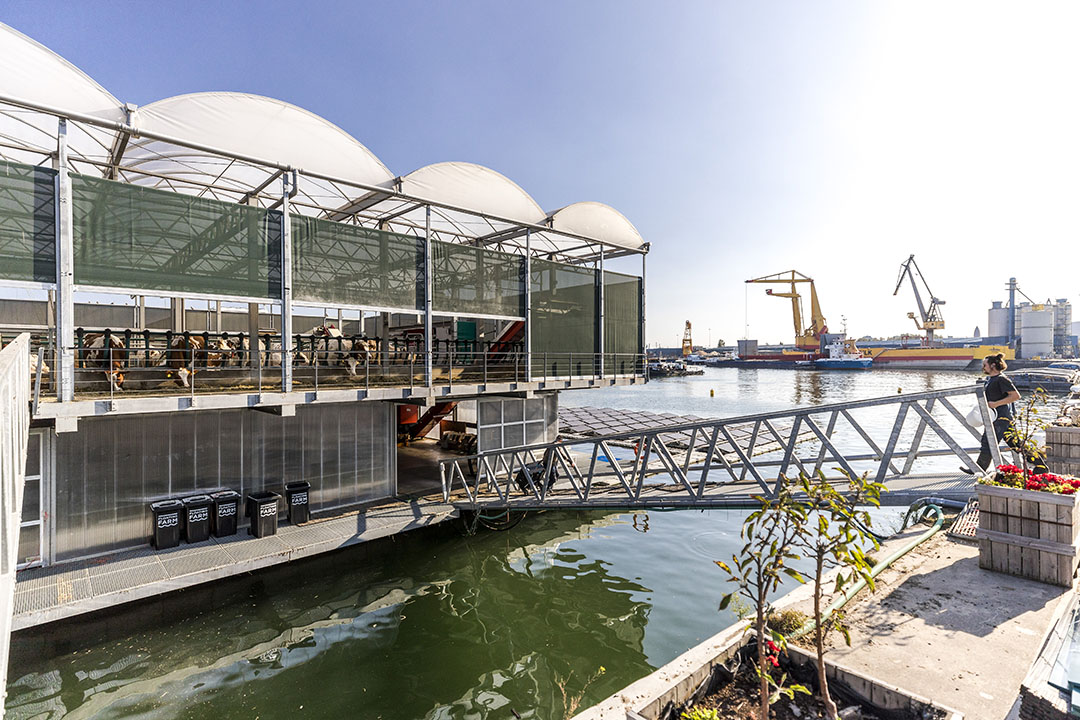
Feed and cow comfort
“Animal welfare is topic number one. If our animals are not doing well, we can close the farm,” says Minke.
For comfort, the cows initially had beds that were made of wood, but now they are on concrete with rubber mats. Screens are open during the warmer summer months for better airflow, and there is a misting system that keeps the cows cool.
When asked about grazing, she says that the cows do not only stay on the floating platform. They are allowed to go out and graze on a section of land situated next to the farm and which is accessible via ramps. According to Minke, the cows have the choice to graze; however, when the land is too wet, this is not possible.
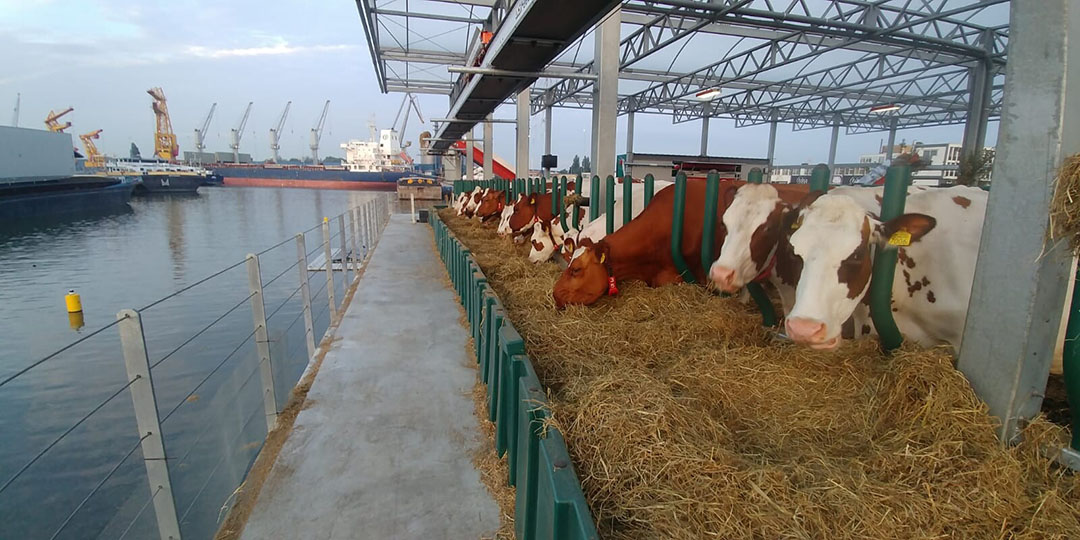
The farm also has a manure robot to ‘soak up’ the manure, which is taken to the manure separator. Minke tells us that separating the manure within 3 hours is important as this means 60% fewer emissions and a more sustainable way of farming.
The cows are fed a total mixed ration (TMR) and residual ingredients from nearby food and beverage businesses, such as beer broth and vegetables. For feed, the farm does not need to buy corn or soy from far away. “We feed our cows with residual products from the city. There is a brewery located next door, and the beer broth is used in addition to vegetables from the food bank.”
These residuals are mixed and fed to the cows. “The feed is from the city but we are aware that the cows like a stable diet, so the nutritionists always keep this in mind,” she explains, adding that 30% dry grass is from land around Rotterdam, 30% beer broth from the brewery, 30% dried distillers gains (DDGS) come from Alco Energy and 10% residual products come from the city.
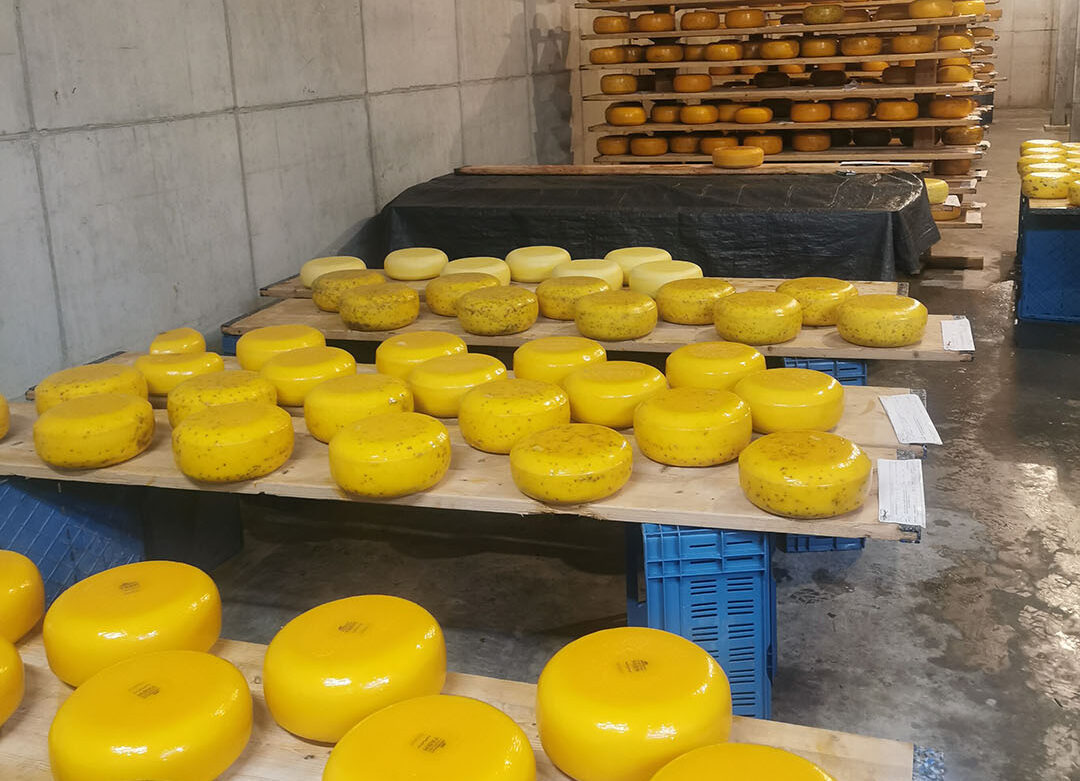
“The cows are happy, they are healthy, the quality and quantity of milk is high and their coats are shiny. We are happy that they are doing well and that makes this project a success,” says Minke.
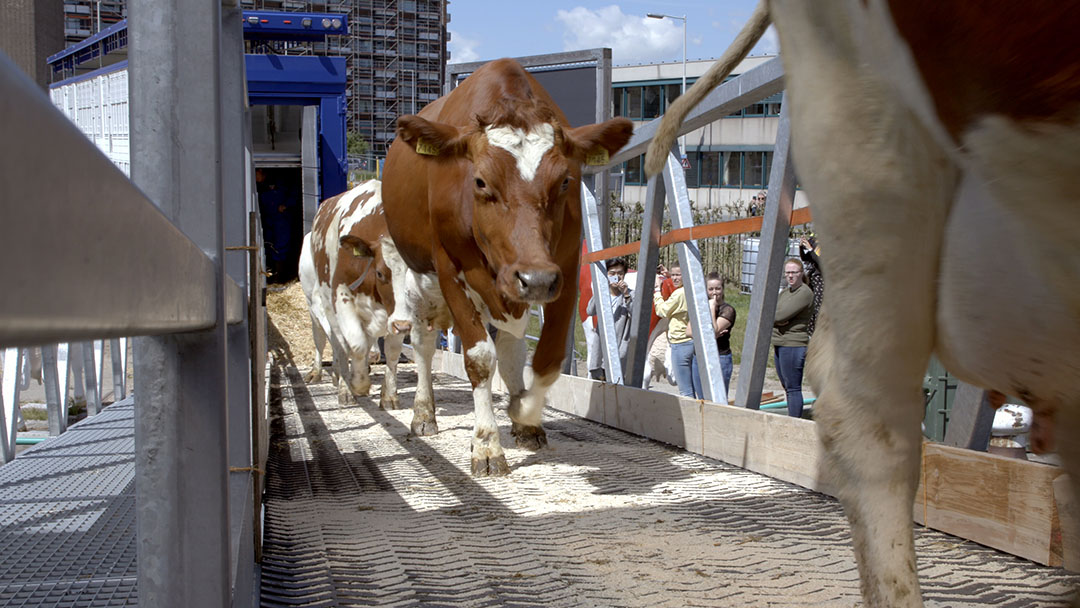
Future plans
Although they have brought consumers closer to production, Minke says that they are still working on logistics to make it even better. “With this farm we are learning, and the next one will be scaled up. They are also planning on creating a vertical farm next to this dairy farm, with the intention to produce vegetables and herbs. Currently there is a small vertical farming set-up situated at the Floating Farm to trial growing vegetables and herbs.” Vegetables and herbs include Wasabi lettuce, spinach, basil, microgreens, mustard leaves, coriander and mint.
Minke states that they have ‘floating farm’ plans and projects on the agenda in Dubai, Singapore and Chicago, but she cannot reveal more details at this stage.
For the future, she feels that an education centre at the farm is needed. Social hubs like this are already part of the farm and Minke believes they are important to further create awareness for the public. “This makes cities more resilient,” Minkes states.
Join 13,000+ subscribers
Subscribe to our newsletter to stay updated about all the need-to-know content in the dairy sector, two times a week.




